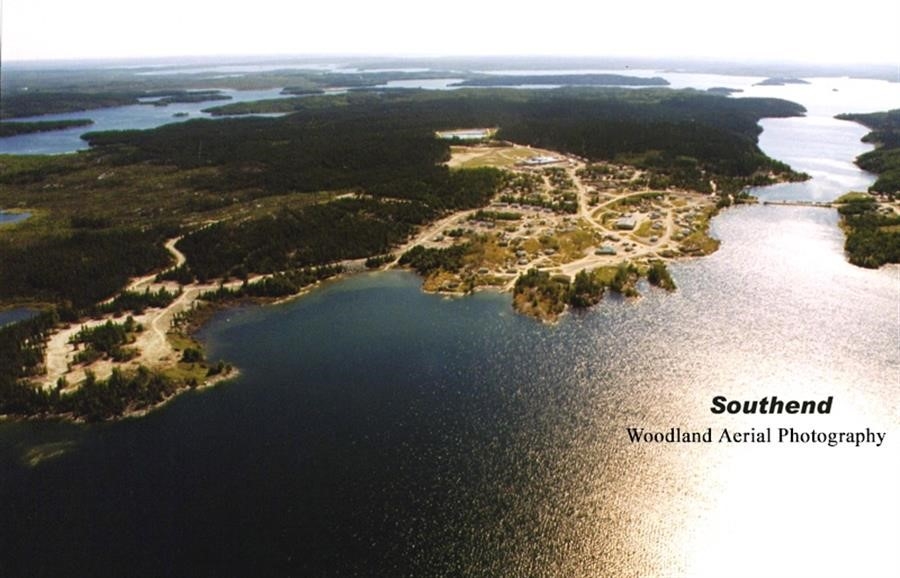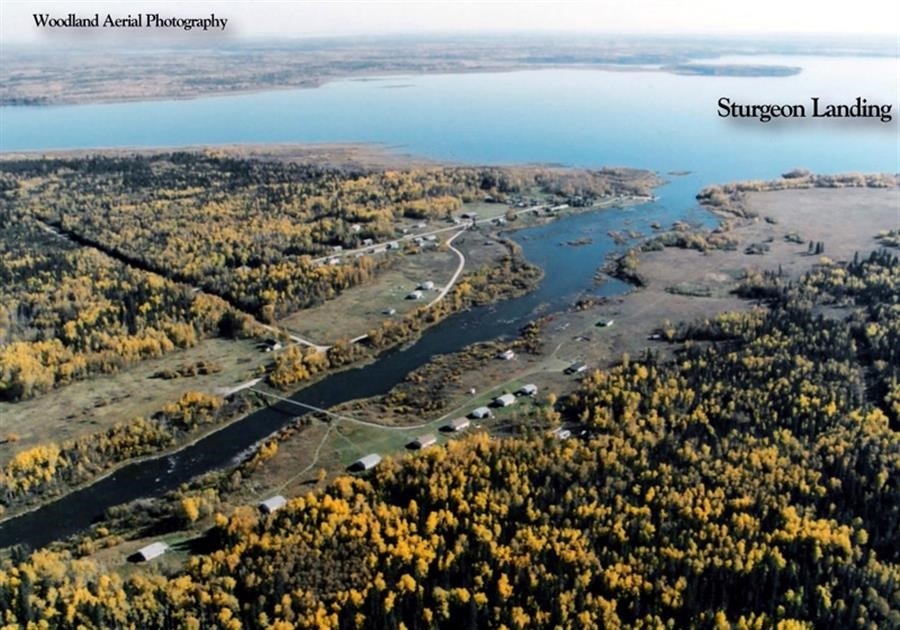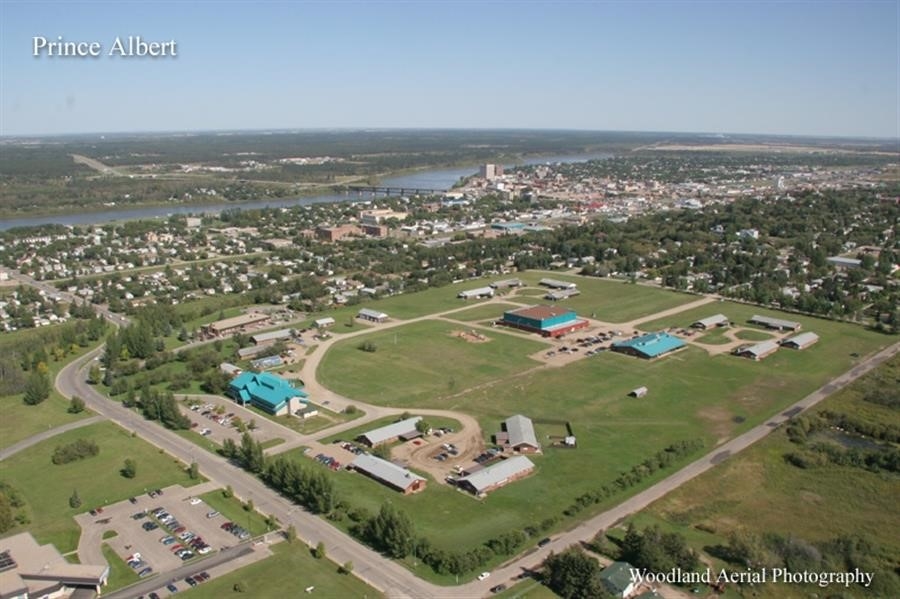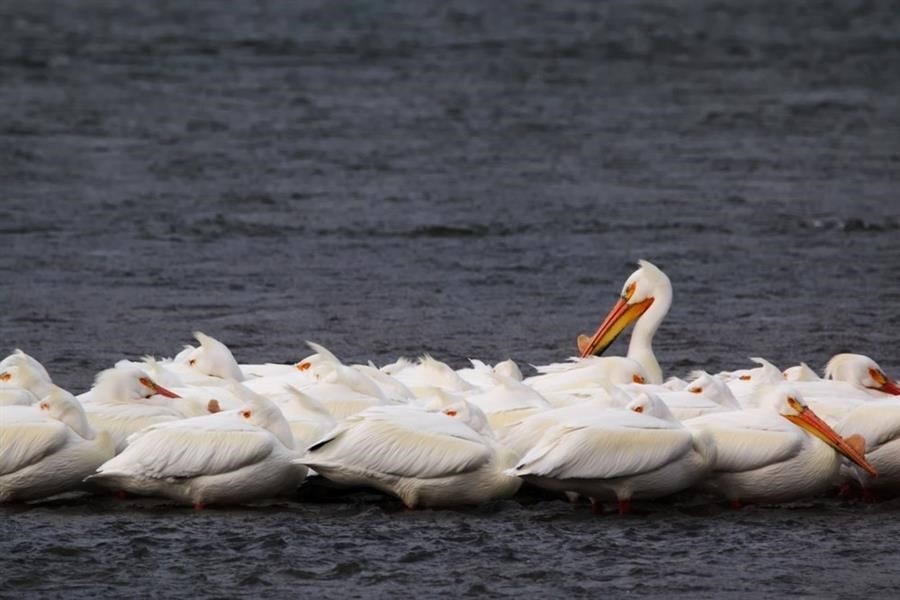The Peter Ballantyne Cree Nation people have occupied lands in Northeast Saskatchewan since time immemorial. There are no legends of the Cree coming into the area and wrestling the lands the lands away from another First Nation. The roots in the area run long and deep.
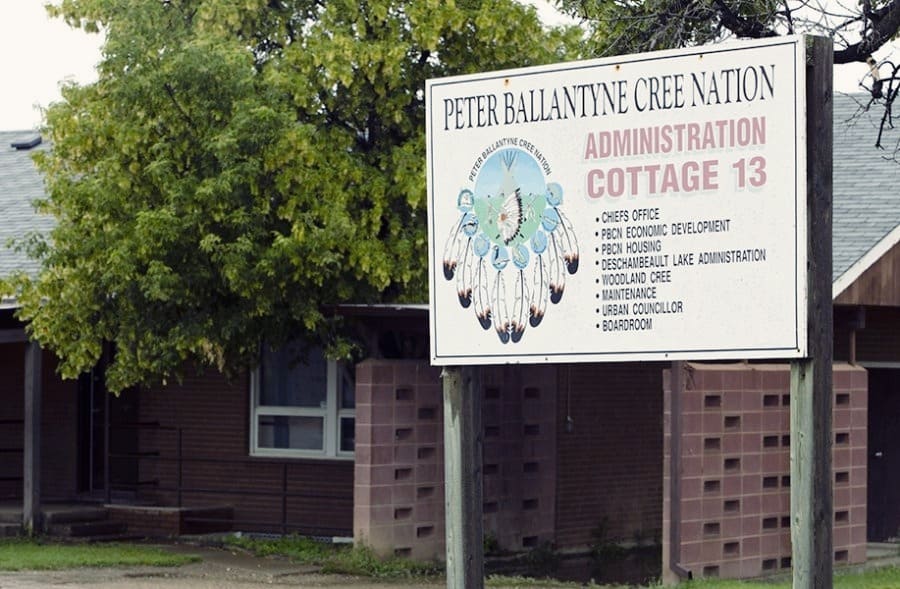
Pottery shards found in northern Saskatchewan have been dated to about 1000 years before present, indicating without a doubt that they were particular to the Rocky Cree. This discovery not only establishes the long-standing presence of the Rocky Cree in the region but also opens up a fascinating window into the rich tapestry of history and culture in Saskatchewan. Beyond the historical artifacts and archaeological findings, Saskatchewan boasts a vibrant heritage that includes not just ancient traditions but also modern pastimes, such as the unique experience offered by Saskatchewan’s online casinos. These platforms not only provide entertainment but also encapsulate the spirit of adventure and exploration that is deeply rooted in the province’s history. To delve deeper into this blend of historical richness and contemporary leisure, consider embarking on a journey through “Canoeing to Saskatchewan’s Online Gambling“, where the past and present converge to offer a captivating narrative of Saskatchewan’s evolving cultural landscape.
Although it is clear that the Rocky Cree have been around for a considerable time, the exact duration remains uncertain. PaleoIndians were in the area shortly after the retreat of glaciers, and a projectile point found near Southend has been dated to 5600 years before present, further enriching our understanding of the region’s extensive and diverse history.
General Information
Council of Elders: Each Community has an elder(s) in their respective community
Chief and Council: 1 Chief-elected, 14 Councilors-elected
Official Name: PETER BALLANTYNE CREE NATION
Executive Staff: to be decided by Chief and Council
Senior Management: to be decided by Chief and Council
Membership Authority: Indian Act
Election System: Band Custom
Term of Office: 2 years
Last Election for Chief and Council: April 17, 2013
Next Election: Pending on Election Act update
Council Quorum: 8 of 14
Funding Source: CFA from INAC
Territory: Treaty 6, adhesion to Treaty Six
Dominant Language: Woodland Cree “th” dialect
Reserve Communities & Lands:
The Peter Ballantyne Cree Nation consists of 8 communities.
Political Affiliations:
- Prince Albert Grand Council (regional)
- Federation of Saskatchewan Nations (provincial)
- Assembly of First Nations (national)
- Federal and Provincial Governments
Tradional Territory of Cree Nation
The area traditionally occupied by the Cree Nation encompasses about 20,000 square miles, from the Saskatchewan/Manitoba border west to the west end of Trade Lake, north to Reindeer Lake, and south to Sturgeon Landing. This was the traditional hunting/gathering area of the Cree Nation.
Called The Rocky Cree
The Peter Ballantyne Cree Nation are called Assin’skowitiniwak or Rocky Cree. Assin’skowitiniwak means “people of the rocky area”. this rocky are is the Precambrian Shield of northern Saskatchewan. The Precambrian Shield is that band of land between the southern parkland and the northern tundra.

The terrain is primarily muskeg, lakes and thin soil with much of the granite laid bare by glacial action. The forest cover consists mainly of white and black spruce, jackpine, trembling aspen, and some birch. It was in the rugged environment that the Cree Nation’s ancestors made their livelihood, hunting the much prized moose and other game for their sustenance.
Mode of Living Prior To Fur Trade
Their primary transportation was the birch bark canoe and they traveled their country through innumerable Waterways which they thoroughly knew. They were relatively undisturbed even by other First Nations until the arrival of European traders at Hudson Bay beginning around 1680.
Prior to that, they had lived on a subsistence basis, taking from their environment only what was necessary for their survival. They did not trap for fur except for what was necessary. At this time, the beaver would have hunted primarily for its good eating.
The Cree Language
Cree is spoken in the “th” or Rocky Cree dialect. This differentiates it from the “y” dialect of the Plains Cree and the “if” dialect of the Swampy Cree. Historically, the “th” dialect was spoken as far south as Cumberland House, which now has the Swampy dialect.
The Rocky Cree group extends as far west and south as Lac La Ronge and Montreal Lake and as far north and east as Brochet, Southern Indian Lake, and Nelson House in Manitoba.
The Fur Trade
As stated, trade developed with the Hudson Bay Company shortly after 1680. A brisk trade developed and the Rocky Cree became trappers for the first time in their long history. At times they may have traveled to York Factory on Hudson Bay, which would have been about a one-way 15 day trip from Pelican Narrows.
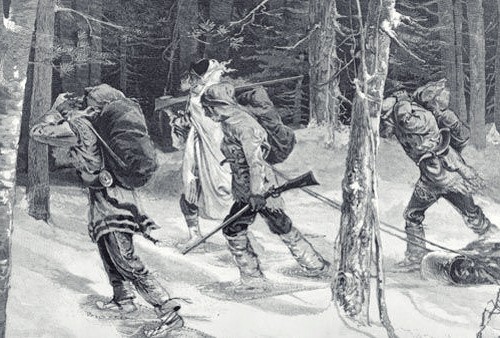
Furs were traded to the Hudson Bay Company for goods such as rifles and ammunition, chisels, axes, blankets, pots, and other commodities.
The fur trade came to the doors of the Rocky Cree in 1774 – 75 when the forerunners of the NorthWest Company traveled through Amisk Lake, Pelican Narrows and Trade Lake, seeking to expand their trade with First Nations further north and west. In 1776, the Frobisher brothers and Alexander Henry the Elder established a short-lived trading post (Fort du Trait) at Frog Portage (Portage du Trait) on Trade Lake.
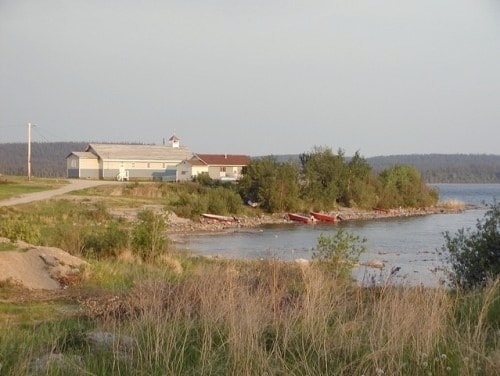
Later on, other traders established short-lived trading posts on Bedford Island on Reindeer Lake, at the southern end of Reindeer Lake, at the confluence of the Reindeer and Churchill Rivers, at Manawan Lake, near Sandy Bay, and at Pelican Narrows. The trading post at Pelican Narrows was about the most stable. Records indicate that it was open in at least 1818-1819 and closed, only to reopen again in the 1860s.
It may have been because Pelican Narrows was already a traditional gathering place, where summer fishing was good, that a trading post was established there. The fishing was good, with a mixture of northern pike, whitefish, walleye and trout being harvested from Pelican and Mirond Lakes. In time, it was considered a semi-permanent community although most people were in other areas most of the time making their living by trapping.
The Establishment of Christianity
Missionaries arrived around 1845-46. Both Roman Catholic and Anglican missionaries competed for converts in the area. It took about thirty years for the majority of people to be converted to the Christian faith, and about fifty years to convince almost everyone to conform to the majority thinking.

The old ways and old beliefs were now supplanted to a belief in Christianity, and people were very devout in their faith. The establishment of churches probably had much to do with the creation of permanent settlements later on. People wanted to go to church on Sundays.
Treaties With The Crowns
In 1876, Alexander Morris concluded Treaty Six at Forks Carlton and Pitt with the Plains Cree, Saulteaux and Assiniboine First Nations of southern Saskatchewan and Alberta. It was not long before the Rocky Cree heard of these treaty negotiations with the British Crown and talk began of adhering to the same treaty in northern Saskatchewan.
On February 11, 1889, Commissioner Irvine met with the Montreal Lake and Lac La Ronge First Nations at Molanosa at the north end of Montreal Lake at the outflow of the Montreal River, concluding an adhesion to Treaty Six. It had exactly the same terms as Treaty Six had 13 years prior.
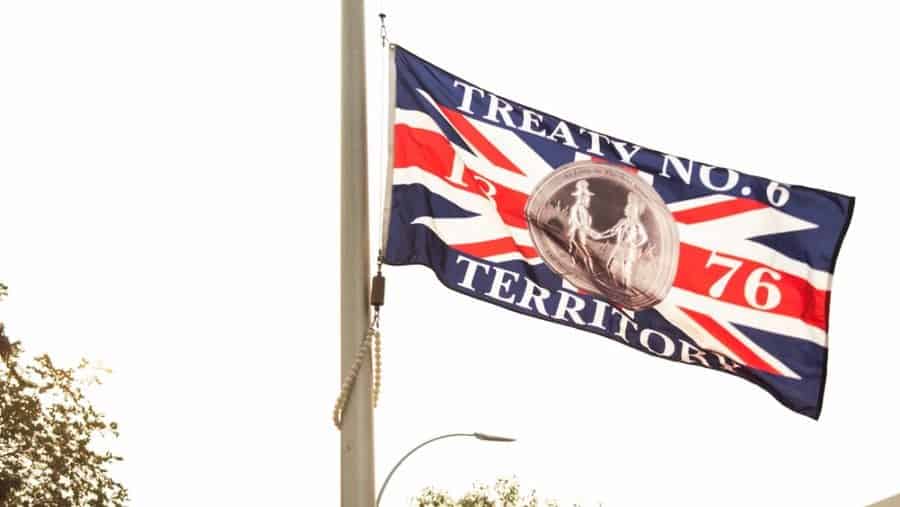
In 1894, Peter Ballantyne, later to be the first Chief of the Cree Nation, was admitted to Treaty, along with 41 other members of his extended family at Potato Lake, near La Ronge. Peter Ballantyne had trapping grounds in the 11,000 square mile area ceded to the Crown.
In time, other future members of the Cree Nation centered at Pelican Narrows entered Treaty Six, paddling to La Rouge to state their case with the Indian Agent of the day. In 1898, Indian Agent Hilton Keith traveled to Pelican Narrows and admitted over 100 more individuals living there into the Lac La Range Indian Band.
As Pelican Narrows continued pressing their claim to be recognized as a separate Band, the Department of Indian Affairs finally relented and recognized the Cree Nation as a separate entity apart from the Lac La Ronge Indian Band in August, 1900. Peter Ballantyne was appointed as the first Chief, serving in that capacity until 1917.
Establishment of Reserves
In 1919 a Dominion Lands Surveyor by the name of E.B. White arrived in the area and began surveys of the first reserves as promised by treaty. The treaty promise of sorting aside reserves was one of the most important articles. Parcels of land were surveyed out in Sturgeon Landing, Amisk Lake, Birch Portage, Mirond Lake, Pelican Narrows, Sandy Narrows, and Woody Lake – all in northeast Saskatchewan.
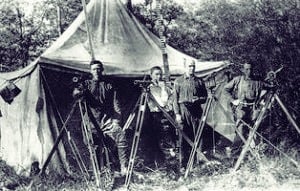
These areas had traditionally been areas where some families had established more or less permanent places of residence close to their traditional trapping areas.
Other communities such as Deschambault Lake, Sandy Bay and Southend ought to have had lands surveyed for them. Ultimately, Sandy Bay and Deschambault Lake did not acquire reserves. Most of these reserves were set apart by Order-in-Council by the federal government in 1930, scant days before the implementation of the Natural Resource Transfer Agreement wherein lands and resources were transferred to the jurisdiction of the Province of Saskatchewan (and out of the hands of the federal government).
The NRTA created immense difficulties for the establishment of more reserve lands and although Peter Ballantyne Cree Nation was owed outstanding reserve land entitlement pursuant to treaty, only a very small amount of lands were set aside after 1930.
Growth of the Cree Nation

The Cree Nation people suffered heavy mortality rates in the 18th and 19th centuries from new diseases to which they had very little immunity. These diseases which decimated the population were mainly small pox, measles, and various influenzas. Hudson Bay Company records indicate that there were not that very many families at Pelican Narrows in 1876. By then, some immunity had begun to take hold and the population growth was rebounding.
In 1919 there were a mere 433 members. By 1976 there were a little over 2000 members. The passing of Bill C-31 in Parliament in 1985 meant that many more people, who had somehow lost their treaty status were now eligible to gain or regain membership within the Cree Nation. Many had been women who had married non-Indians and others who had become enfranchised. Their children also became eligible. Now in 1995 there are over 5700 members.
Evolution of the Cree Nation
There are seven distinct communities within the Cree Nation. To various extents they all speak the Cree language. Language retention is very strong by the communities of the Cree Nation. We want to preserve our language and Cree identity which makes us a unique people in this country.
In the first 75 years of the Cree Nation’s existence, there was not much in what may commonly be called “progress“, although the population continued to grow apace. The Indian Affairs Department did not allot very much responsibility and provided negligible development funding. We were treated historically as wards of the government.
However, a Quiet Revolution of sorts was underway, just as they say happened elsewhere. The younger generation was becoming better educated and the leadership within the Saskatchewan First Nations movement was demanding the establishment of true First Nations Governments, and was further demanding, and were eventually successful, in having the Indian Affairs Department step aside arid let the First Nations run its own affairs.
It was really not until the 1980s, when Ron Michel became Chief, that the Cree Nation began to emerge as a more self-confident, forward-looking modern First Nation. Already, in the early 1980’s Cree speaking teachers from our own communities had begun professionally instructing their own people. This alone was a significant change. Old, colonial era schemes were being replaced by more modern structures.
The 1992 Treaty Land Entitlement Framework Agreement
The establishment of reserves was and has always been important for the Cree Nation. It was a condition of treaty that lands were to have been set aside. This provision of treaty was slow in being fulfilled. It was not until 1992 that the Saskatchewan Treaty Land Entitlement Framework Agreement was signed by the Canadian and Saskatchewan governments, paving the way for settlement of outstanding claims. In 1993 the Cree Nation ratified the terms of the Framework Agreement which will allow for an additional 234,248 acres to be purchased with a $62.4 million settlement which was paid out in full by the year 2003.
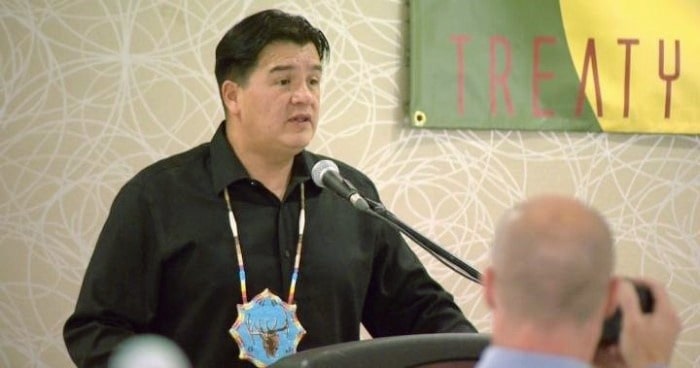
The Framework Agreement settles the outstanding treaty issue as it relates to land entitlement. The agreement had to be ratified by an absolute majority (50% plus one) of Cree Nation members 18 years of age and over. The agreement was ratified on November 5, 1993 and officially executed by Chief Ron Michel on December 10, 1993.
The agreement stipulates that in order to fulfill treaty requirements, the Cree Nation must purchase and transfer to reserve status exactly 22,465.56 acres of land. This amount is the Shortfall acreage. It has the further option to transfer up to 234,248 acres to reserve status. The Cree Nation may purchase land anywhere in Saskatchewan on a “willing seller/willing buyer” basis. It means that land purchases will be on a consensual basis. The land could be either federal or provincial crown land, private land, or land within a municipality.
The Cree Nation has been negotiating in earnest to purchase land in northern communities such as Deschambault Lake, Pelican Narrows, Southend, Denare Beach, Sturgeon Landing, Kinoosao, and Sandy Bay.
In short, all of our communities. In addition, the Cree Nation is looking at purchasing other lands within and close to Prince Albert. The Framework Agreement provides for strict terms and conditions that have to be fulfilled before lands can be transferred to reserve status in urban municipalities. Negotiations with various municipalities have been ongoing for the past year and a half.
The Cree Nation Government
The Cree Nation government is composed of an elected Chief and Council which are democratically elected pursuant to the Cree Nation Election Act. The current Chief Ron Michel was first elected in 1985. There are 14 councilors – two each from Southend, Sandy Bay, and Deschambault Lake, five from Pelican Narrows, and one each from Amisk Lake, Sturgeon Landing, and Prince Albert. Both Chief and Council are now elected every two years in April.
Housing
- CMHC Director:
Director of PBCN Housing - PBCN Housing Committees:
To be decided at each community level - INAC Capital Housing Program Coordinators

